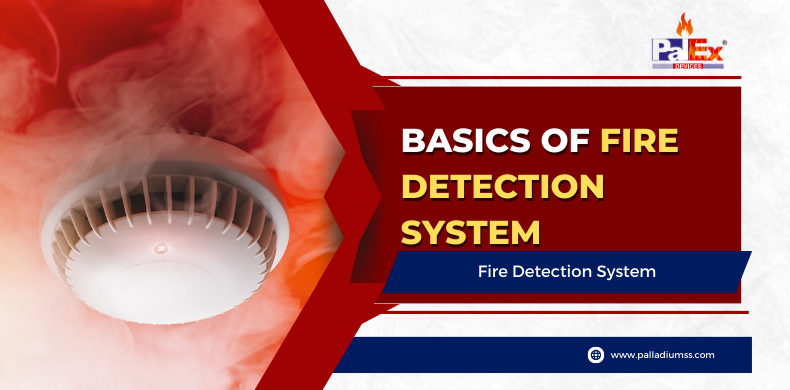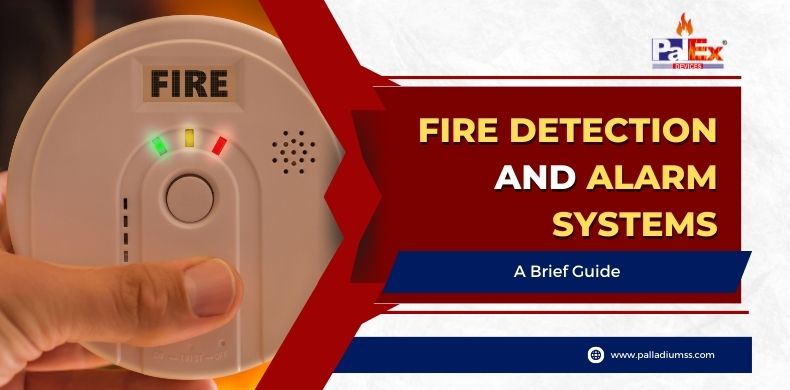The system is usually connected to a central alarm station that monitors the building and notifies the fire department in the event of a fire. When choosing a fire alarm system, it is essential to consider the type of building, the level of protection required, and the budget. Different types of systems are better suited for different applications. For example, a restaurant may need a different system than an office building.
Why Fire Detection and Alarm System Required
There are several reasons why fire detection and alarm system are required in buildings.
Smoke Detector Working Principle
A smoke detector is a device that senses smoke and sends an alarm signal to the fire alarm system. A smoke detector consists of a sensor that is sensitive to smoke and an alarm that sounds when the sensor detects smoke. Smoke detectors are an essential part of a fire alarm system. They are usually located in hallways and bedrooms.
Type of Fire Detection Systems
Several types of Fire Detection systems are available on the market, and every fire detectors have its own specific workings. A list of various kind of fire detector are stated below:
-
Optical Smoke Detector
Optical smoke detectors work by sensing smoke particles in the air. The smoke particles reflect light onto a light sensor. The light sensor activates the alarm. Optical smoke detectors are less likely to cause false alarms than other detectors.
-
Heat Detector
- Rate-of-rise heat detectors activate when the temperature rises rapidly. They are used in applications where a fire is likely to develop quickly, such as in flammable liquid storage areas.
- Fixed-temperature heat detectors activate when the temperature reaches a specific threshold. They are designed to activate at a high enough temperature to cause damage but low enough so people can evacuate the building safely. Fixed-temperature heat detectors are usually located in areas where a fire is likely to develop slowly, such as in bedrooms.
-
Stand Alone Smoke Detector
A stand-alone smoke detector is a smoke detector that is not connected to a fire alarm system. Stand-alone smoke detectors usually have their own battery. They may also have their own sounder. Stand-alone smoke detectors are not as adequate as smoke detectors connected to a fire alarm system. This is because they will only provide an early warning if someone is in the same room as the detector.
-
UV Flame Detector
A UV flame detector is a device that uses ultraviolet (UV) light to detect flames. The detector consists of a UV sensor and an alarm. The sensor is sensitive to UV light. The alarm sounds when the sensor detects UV light from a flame.
-
Beam Detector
Beam detectors are used in combination with reflectors. The reflector is placed on the opposite side of the room from the detector. The detector sends out a beam of light. The beam is reflected by the reflector. The detector senses when the beam is interrupted. The detector then sends an alarm signal to the fire alarm system. Beam detectors are commonly used in large rooms, such as auditoriums and warehouses.
-
LPG Leak Detector
LPG leak detectors are used to detect liquefied petroleum gas leaks (LPG). They are used in household and commercial applications. LPG leak detectors usually have an alarm that sounds when a leak is detected. This might be very useful for providing an earlier warning and can control the hazards.
Conclusion
There are many different fire detectors, each with its specific working. Choose the appropriate fire detector according to the need and area to be covered. Do not neglect fire detectors, as they might just save your life and property one day.Still, Confused? Contact Professionals
Palladium Safety Solutions offers a wide range of fire detectors to suit your needs. We also provide a free consultation to help choose the appropriate fire detector for your application. Contact us today to learn more!Fire Detection and Alarm Systems: A Brief Guide
Purpose of Fire Alarm and Detection System
The working principle is quite simple and there are two main types of fire alarm systems: fire detection systems and sprinklers. fire detection systems are the most common type of fire alarm, and they work by detecting the presence of smoke in the air. Sprinklers are less common, but they are more effective at putting out fires.Fire Detection System
There are two main types of fire detection systems: those that use smoke detectors and those that use heat detectors.- Smoke detectors work by constantly monitoring the air for particles of burning material, such as smoke, fumes or ashes. They come in two main types: ionization and photoelectric.
- Ionization smoke detectors work by detecting the presence of ions in the air, which are created when smoke particles enter the detector.
- Photoelectric smoke detectors work by detecting the presence of light particles in the air, which are created when smoke particles enter the detector.
- Heat detectors, on the other hand, have sensors that measure changes in temperature.
Both types of systems have their advantages and disadvantages, which should be considered when choosing a system for a particular building.
Smoke detectors are more sensitive than heat detectors and will therefore pick up fires at an earlier stage. This can give people more time to evacuate before the fire spreads and becomes dangerous.
However, smoke detectors can also be triggered by other things besides fires, such as cooking fumes or dust particles, which can cause false alarms. Heat detectors, on the other hand, are not as easily triggered by non-fire-related things but they may not pick up the fire until it has already spread somewhat through a room or area.
Sprinklers
Sprinklers come in two main types: wet pipe and dry pipe.- Wet pipe sprinklers have water stored in them at all times, so that they can immediately begin spraying water when a fire is detected.
- Dry pipe sprinklers have a valve that prevents water from entering the piping until a fire is detected, at which point the valve opens and water flows into the piping.
Advantages of Fire Detection and Alarm Systems
A well-designed and installed fire detection and alarm system is an important part of a building’s fire safety system.- Fire detection and alarm systems can provide early warning of a developing fire, allowing occupants to safely evacuate the premises before the fire spreads.
- In many cases, automatic sprinkler systems are also linked to the fire detection and alarm system so that they activate when a fire is detected, suppressing or extinguishing the fire before it has a chance to spread. This can significantly reduce damage to property as well as the risk of injury or death.


